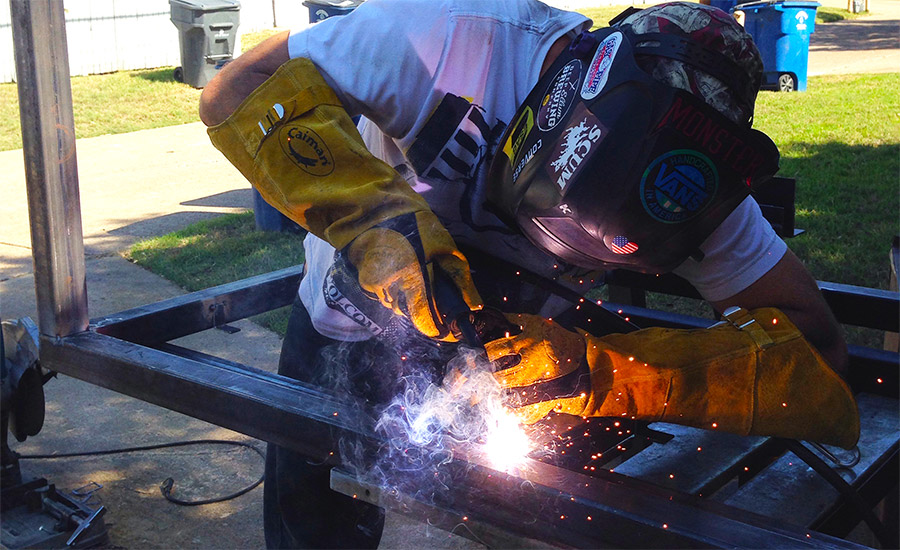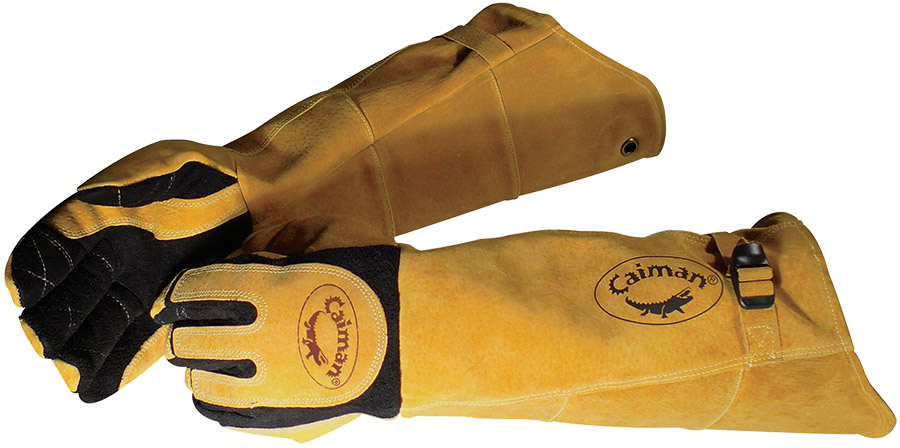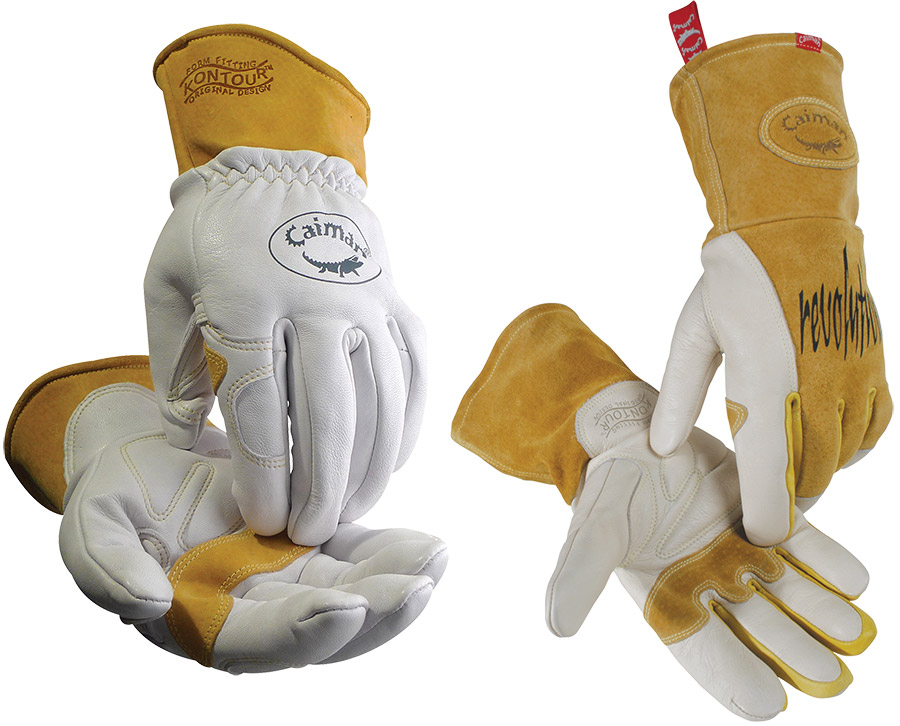Above: The Caiman 1871 gloves are multitaskers, designed for medium-duty welding, but flexible enough to take on other work.
Welding gloves move beyond basic function and incorporate comfort and durability into protection
September 2018 - Today’s fabricators are multitaskers by necessity, and the equipment they use to perform their jobs—including personal protective equipment (PPE)—must be equally flexible. Traditionally, most PPE, especially gloves designed for a fabricating and welding environment, was constructed to serve one purpose: protection.
“Welding gloves have been pretty much the same for decades,” says Paul Sung, vice president of sales and marketing for Primax Manufacturing & Trading/Caiman Gloves, La Mirada, California. “Most manufacturers focused on the safety/protection aspect of gloves while somewhat ignoring and struggling with other considerations, such as fit and comfort.”
However, welders want gloves that protect their hands and fit well enough to perform highly precise work. “Most fabricators are performing multiple tasks,” Sung says. “They want a glove to do it all.”

Caiman gloves by Primax strives to define a new standard of design, comfort and protection. Sung says the company’s Revolution line of welding gloves was developed to address all aspects desired by fabricators: protection, comfort, fit, dexterity, performance and even aesthetics.
“It’s not uncommon to see someone use one of our Revolution welding gloves not only for welding but also for grinding, handling raw material and holding other tools, since they provide exceptional comfort, fit and dexterity,” he comments. “This would be very unlikely with traditional welding gloves due to their bulky, cumbersome and uncomfortable nature.”
Have it all
Users have been conditioned to believe that gloves can be comfortable but not durable—and vice versa, according to Sung. “Most welding glove manufacturers have relied on the material to determine the comfort level of a product. They use a softer or thinner leather to enhance comfort, but in most cases, these materials aren’t the most durable.”
Caiman focuses on construction and using the right types of materials in the right places. The company has trademarked Kontour, its exclusive three-dimensional form-fitting patterns that mimic the curves, angles and shapes of a person’s hand for a natural, precise, ergonomic fit, instead of following the traditional pattern of flat, boxy welding gloves. “The only way you can tell traditional welding gloves are meant for hands are the five crudely shaped digits,” Sung notes.

Caiman often selects multiple types of leather for a glove “to fully take advantage of certain characteristics of a particular leather. For example, you’ll find the most durable leathers on back of the hand, due to exposure, and softer leathers on the palm side for dexterity and feel. Then, possibly a smaller reinforcement patch on the palm or side will utilize a more durable leather. We also focus on seam placements and shapes of certain reinforcement patches to make sure they don’t impede the comfort, durability or performance of the product.”
Proper fit and comfort are just as important as performance and durability in applications like welding where precision is required. “For anyone familiar with the welding environment, it’s obvious there are a lot of nasty elements to deal with,” Sung says. “There’s extreme heat, flames, sparks, spatter, sharp pieces of metal, harmful UV rays and heavy objects. Of course, welders must wear protection, quite a bit in most cases. Then, they’re required to weld a precise bead to join pieces of metal together. It can be quite the task—especially while wearing so much PPE. Now, imagine trying to do so with a pair of big and bulky gloves that you’re constantly fighting. We feel welders deserve better gloves and garments that truly help them perform these daunting tasks.”

Fits like a glove
Because comfort and fit is subjective, Sung suggests fabrication shops implement a periodic review of the gloves their employees are using. “It’s as simple as requesting samples from a manufacturer or two, passing them to experienced employees and then, obtaining their feedback on the pros and cons and how these products compare to their current gloves.”
Gloves are very similar to shoes, and ones that are too tight, bulky or awkwardly fitting won’t get worn. “I’m pretty sure we all have shoes in our closets that rarely get worn due to them being uncomfortable. Give a worker a comfortable pair of gloves that perform, and they will become their go-to. Wearing uncomfortable gloves in the work environment is a drag and, in some situations, a safety hazard. The last thing a welder or fabricator wants to do is fight their gloves when trying to perform their tasks.”
Primax Manufacturing & Trading Inc./Caiman Gloves
La Mirada, California
714/523-2532

